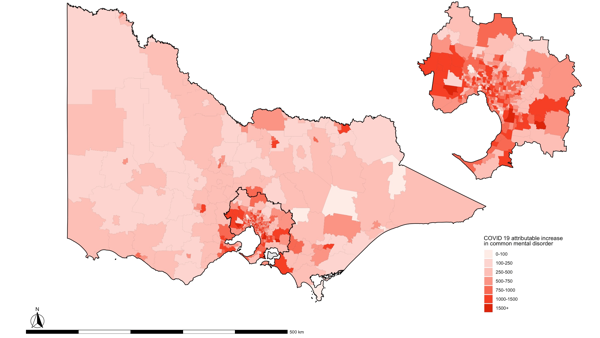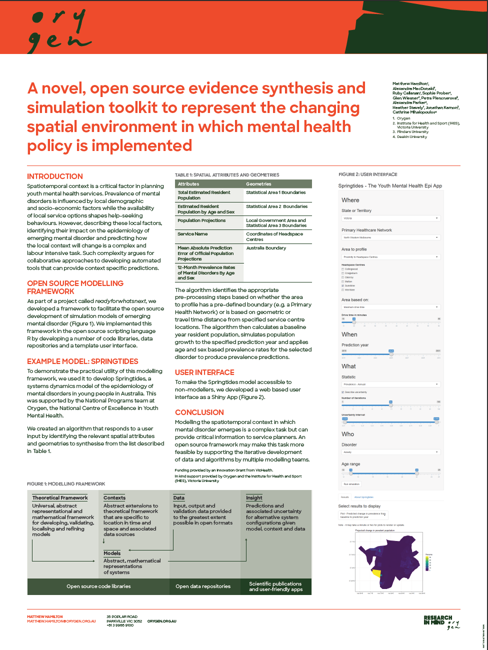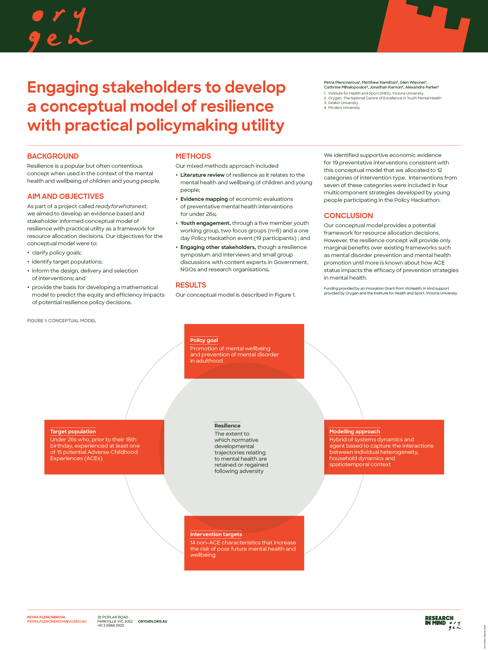This is the multi-page printable view of this section. Click here to print.
News About ready4
- Introducing ready4 framework modules and syntax
- ready4 software now archived on Zenodo
- Predicting Quality Adjusted Life Years in young people attending primary mental health services
- Modelling the mental health impacts of COVID-19
- readyforwhatsnext - conference posters now available
Introducing ready4 framework modules and syntax
The ready4 framework has reached a major milestone with the launch of tools to implement modular models that use a simple and consistent syntax.
Development version software to implement and extend the ready4 framework has been publicly available for over a year now. However, the way that this code was limited has limited its potential utility as a toolkit for developing transparent and modular mental health systems models. The latest release of the ready4 R package addresses these limitations with two important innovations:
-
introducing the concept of modules, to facilitate consistent application of an Object Oriented Programming approach throughout the ready4 software suite;
-
codifying a simple and consistent syntax for use in all programs that implement configurations of models developed with the ready4 framework.
To view or cite the archive copy of the version of the ready4 package which introduced these innovations use https://doi.org/10.5281/zenodo.5847544. To view or cite the most recently archived copy of the ready4 package use https://doi.org/10.5281/ZENODO.5606250. The latest documentation for the package is available at https://ready4-dev.github.io/ready4/
ready4 software now archived on Zenodo
The software that we create to implement the ready4 framework and the models developed with that framework will from this point forward be archived on Zenodo.
Zenodo is an open science platform developed by CERN and using it as a repository for archiving our software has a number of advantages:
- it creates a permanent copy of each software item, thus making these items appropriate for citation in peer-reviewed journal articles (unlike software stored in impermanent development code repositories such as GitHub);
- it create DOI identifiers for each archived software item, minting a new DOI for each version of a software item sent for archiving as well as providing a catch all DOI that can apply to all versions of the software;
- it provides a simple workflow to integrate with GitHub repositories (where our most up to date development code is stored);
- it automatically submites archived items for indexing on OpenAire; and
- it includes easy to use citation tools to help generate appropriate citations for software in multiple output formats.
We have established a ready4 community within Zenodo, in which all our code is stored.
Predicting Quality Adjusted Life Years in young people attending primary mental health services
We applied our youthvars and TTU modules to developing a dataset of transfer to utility models that can be used to predict adolescent weighted AQoL-6D health utility from a range of psychological distress, depression, anxiety and functioning predictors. Vignettes from the youthu R package illustrate (using fake data) how these models can be used to derive Quality Adjusted Life Year predictions. A preprint describing this study is now available at: https://www.medrxiv.org/content/10.1101/2021.07.07.21260129v3. The three toolkits, the dataset and the pre-print are outputs of the Spring To Life model of people.
Modelling the mental health impacts of COVID-19

Combined Springtides and University of Sydney model predictions
One of the preliminary applications of the Springtides model was to provide initial predictions, early in the COVID-19 pandemic about the potential mental health impacts of the pandemic in the absence of government intervention. That original analysis was undertaken in May 2020 in collaboration with colleagues at the University of Sydney and was subject to media coverage, both at the time and in December 2020.
Code-libraries and datasets for Springtides will be publicly released in the future, but a brief overview of the modelling approach is described from the 55 minute mark of the below webinar.
readyforwhatsnext - conference posters now available

readyforwhatsnext spatial systems dynamics model poster
International academic conference poster presentations relating to the readyforwhatsnext project have been made available in the project’s scientific summaries dataset https://doi.org/10.7910/DVN/QBZFQV. The two posters that have been uploaded summarise the project’s conceptual model and how its systems dynamics model was adapted to develop the Springtides spatial epidemiology simulator.

readyforwhatsnext resilience conceptual model poster